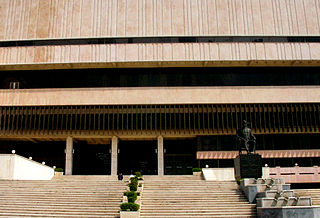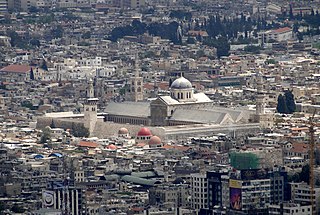 W
WThe National Library of Aleppo is a Syrian national library in the northern city of Aleppo. It was opened in 1924, at the Islamic awqaf department in Khan al-Jumrok at the time of the French Mandate.
 W
WAl-Assad National Library is the national library of Syria, located in the capital Damascus overlooking the Umayyad Square. It's named after Hafez al-Assad.
 W
WThe University of Damascus is the largest and oldest university in Syria, located in the capital Damascus and has campuses in other Syrian cities. It was founded in 1923 through the merger of the School of Medicine and the Institute of Law. Until 1958 it was named the Syrian University, but the name changed after the founding of the University of Aleppo. There are nine public universities and more than ten private ones in Syria. Damascus University was one of the most reputable universities in the Middle East before the war in Syria started in 2011.
 W
WThe Umayyad Mosque, also known as the Great Mosque of Damascus, located in the old city of Damascus, is one of the largest and oldest mosques in the world. The mosque is also important in Islam because of its historical and eschatological reports and events associated with the mosque. The mosque is the fourth holiest site of Islam.
 W
WUniversity of Aleppo is a public university located in Aleppo, Syria. It is the second largest university in Syria after the University of Damascus.
 W
WThe University of Damascus is the largest and oldest university in Syria, located in the capital Damascus and has campuses in other Syrian cities. It was founded in 1923 through the merger of the School of Medicine and the Institute of Law. Until 1958 it was named the Syrian University, but the name changed after the founding of the University of Aleppo. There are nine public universities and more than ten private ones in Syria. Damascus University was one of the most reputable universities in the Middle East before the war in Syria started in 2011.
 W
WThe Az-Zahiriyah library or Madrasa al-Zahiriyya is a historic library, madrasa, and mausoleum in Damascus, Syria. It dates back to 1277, taking its name from Sultan al-Zahir Baybars (1223–1277) who is buried here.